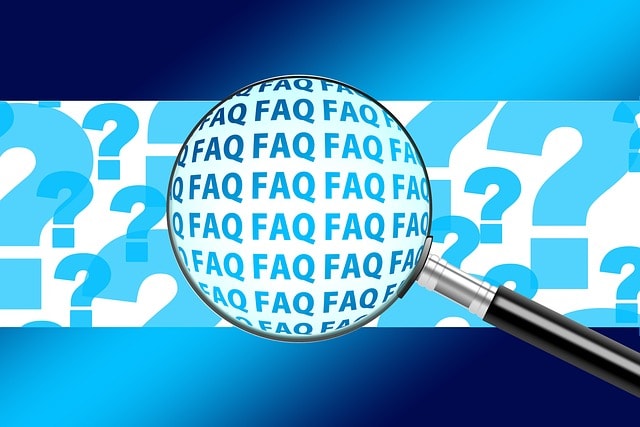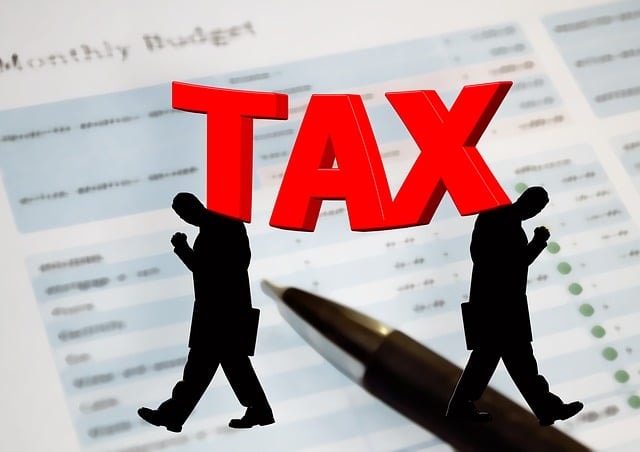What are T&E Expenses?
T&E can stand for travel and expense or travel and entertainment expenses, with both usages commonly accepted. It encompasses costs related to employee travel for work purposes, such as meeting with or entertaining clients or sales leads. These costs can vary from actual expenses to allowable expenses, all documented through expense forms.
In the business world, T&E expenses are crucial in tracking spending, ensuring compliance with expense policies, and facilitating expense reimbursements. They provide insights into overall operating costs, helping companies manage their finances effectively.
T&E expenses cover many categories, from business trips to client dinners, reflecting the diverse nature of modern business operations. Proper management of T&E expenses can lead to improved budgeting accuracy and better decision-making processes within organizations.
Businesses typically either provide employees with a business credit card for T&E expenses or reimburse employees for the costs after paying them out of pocket. Deciding which method to use is a crucial consideration for small business owners. Furthermore, T&E expenses are typically tax-deductible, incentivizing small businesses to diligently and accurately track and report these costs.
What are the categories of T&E Expenses?
Here are some of the most common business T&E expense categories.
- Airfare: Expenses related to purchasing plane tickets for business travel.
- Accommodation: Costs associated with staying in hotels or other lodging during business trips.
- Meals: Money spent on food and beverages while traveling for work.
- Transportation: Expenses for taxis, rental cars, public transportation, or other modes of travel during business trips.
- Entertainment: Costs for client dinners, events, or other activities related to business entertainment.
Why are T&E Expenses important in Small Business?
T&E expenses are crucial in small businesses, facilitating business travel and client meetings. Efficient management of these expenses is vital for cost control and financial stability. Small businesses can achieve significant cost savings by accurately tracking and controlling T&E costs.
Effective management of T&E expenses enables companies to allocate resources strategically, maximizing operational efficiency. This ensures financial health and fosters business growth by investing saved funds in expansion opportunities. Moreover, well-managed T&E expenses contribute to building strong client relationships, enabling frequent interactions and personalized services.
Small businesses that neglect proper T&E expense management risk overspending and financial strain. Companies can optimize their spending and drive sustainable growth by implementing streamlined processes and utilizing digital tools for expense tracking.
What is the T&E Expense management process?
Each business sets its specific T&E policy based on the size of the business, industry, and frequency of travel expenses. However, there are some consistent aspects of managing the T&E expenses.
Pre-Authorization
Pre-authorization in T&E management refers to obtaining approval before incurring expenses related to travel and entertainment. This step helps ensure compliance with company policies and budget constraints, preventing unauthorized spending. Pre-authorization also allows for better tracking and control of expenses, ultimately leading to more efficient expense management.
Reporting
Employees are responsible for the T&E expense reporting process. This involves maintaining detailed records of expenses incurred during employee travel and submitting expense reports. Examples include airfare, hotel, and meal receipts, keeping a mileage log, or relevant invoices. Employees typically fill out an expense report detailing the costs, the dates, and the reasons for the expenses. Paper receipts and mileage logs typically accompany expense reports.
Approval
The approval process involves reviewing and authorizing costs incurred by employees during business travel or other work-related activities. Organizations can maintain financial control and transparency by carefully monitoring and approving these expenses.
Reimbursement Process
After approval, businesses will reimburse employees for approved expenses. This can include a separate paycheck, direct deposit, or adding the amount to the employee’s regular pay schedule. Some businesses may opt for an ACH transfer of the funds. If using a corporate credit card, the company pays off the credit card balance rather than reimburses the employee.
Accounting
The final step is reconciling expenses and reimbursements in the business’s bookkeeping. This includes generating a spending report and recording any receipts or other information in case of an audit. The accounting component might be the most vital aspect for small businesses since they must accurately report expenses for tax deductions and understand the impact of these costs on the bottom line.
What are the benefits of T&E Expenses?
Travel and entertainment (T&E) expenses offer numerous advantages for businesses. Reimbursing these expenses can increase employee satisfaction and productivity. Employees who feel valued through proper allowances are likely to perform better.
Well-managed T&E expenses can significantly enhance a company’s reputation. Organizations can build stronger relationships and secure more growth opportunities by investing in business trips and client entertainment. This positive impact on relationships can be invaluable in the competitive business world.
Moreover, T&E expenses are typically tax deductible, providing financial benefits to companies. Businesses can offset some taxable income by including these expenses in their financial reports. This tax advantage makes investing in T&E activities an intelligent financial decision for many organizations.
What are the drawbacks of T&E Expenses?
While travel and entertainment expenses are beneficial, they come with unexpected costs and challenges. One major drawback is overspending, where employees exceed set budgets for trips. This can lead to financial strain on the company and affect overall profitability.
Another issue is policy violations, where employees may not adhere to company guidelines regarding expenses. This could result in misuse of funds, lack of accountability, and potential legal implications. To mitigate this, companies must enforce strict policies and conduct regular audits to ensure compliance.
Reimbursement delays are a common frustration associated with T&E expenses. Employees often have to wait for extended periods to get reimbursed for their expenditures, which causes dissatisfaction and affects morale. Implementing efficient reimbursement processes and utilizing digital tools can help streamline this aspect and improve employee satisfaction.
T&E Expense Pros & Cons
Pros:
- Allow employees to travel for work and attend important meetings or events.
- Can help build relationships with clients and partners.
- Provide opportunities for professional development and networking.
- These expenses are typically tax deductible.
Cons:
- Can be costly and impact the company’s bottom line.
- Difficult to track and manage expenses accurately.
- May lead to potential misuse or abuse of funds.
- Delays in reimbursement can cause employee frustration.
How can I implement a T&E Policy?
The following steps can help small businesses develop and implement an effective T&E expense policy.
Step 1—Assess Your Current Travel and Expense Practices
Before implementing a T&E policy, evaluating your current processes is essential. Look at how expenses are approved, reimbursed, and tracked. Identify any areas of inefficiency or potential for improvement.
Step 2 – Define Your Policy Objectives
Determine what you want to achieve with your T&E policy. Are you aiming to reduce costs, streamline processes, ensure compliance, or all of the above? Clearly outline your goals to guide the development of your policy.
Step 3 – Establish Guidelines and Limits
Set clear guidelines for what expenses are allowed and what spending limits apply. This can include categories such as transportation, accommodation, meals, and entertainment. Establish maximum amounts for each category to control costs.
Step 4 – Communicate the policy
Once your T&E policy is developed, communicate it effectively to all employees. Provide training on the policy, explain the reasoning behind it, and address any questions or concerns.
Step 5 – Implement an Expense Management System
Consider using an automated expense management system to streamline submitting, approving, and reimbursing expenses. This can help enforce policy compliance and provide visibility into spending.
Step 6 – Monitor and Enforce Compliance
Regularly monitor expenses to ensure compliance with the T&E policy. Implement controls to flag any violations or exceptions. Address non-compliance promptly and consistently.
Step 7 – Review and Update Regularly
As your business evolves, so should your T&E policy. Review the policy regularly to ensure it remains relevant and effective. Update it as needed based on feedback, regulation changes, or business priorities.
Frequently Asked Questions
Here are the most common questions about T&E expenses.
Is T&E considered an operating Expense?
A company’s financial records typically classify travel and entertainment (T&E) expenses as operating expenses. These costs are essential for the day-to-day operations of the business.
T&E expenses cover various costs, including flights, accommodation, meals, and entertainment for employees while conducting business activities. Companies can accurately track and manage their ongoing operational costs by categorizing them as operating expenses.
Operating expenses directly impact a company’s financial statements by affecting the net income. Higher T&E expenses result in lower profits, influencing investors’ perceptions of the company’s financial health.
When T&E expenses are treated as operating expenses, they are fully deductible from the company’s taxable income. This classification allows businesses to reduce their tax liability by offsetting these costs against their revenue.
What’s included in T&E Expense Reports?
Travel and entertainment (T&E) expense reports typically consist of various components essential for accurate tracking and reimbursement. Receipts are crucial in documenting expenses and providing proof of purchases made during business trips or client meetings. These receipts should be attached to the expense report for validation.
Expense reports include details such as the date of the expense, the amount spent, the purpose of the expenditure, and the individuals involved. This information helps process expense reports efficiently and ensures compliance with company policies and IRS regulations.
To streamline the approval process, employees must obtain approvals from relevant authorities before submitting their expense reports. This step enhances transparency and accountability within the organization. By maintaining accuracy and transparency in T&E expense reporting, companies can effectively monitor spending patterns, identify cost-saving opportunities, and prevent fraudulent activities.
Are T&E Expenses tax deductible?
Many business travel expenses are indeed tax-deductible. According to IRS guidelines, these expenses must be necessary and ordinary for your business.
Eligible business expenses such as transportation, lodging, meals, and even tips can be deducted. However, keeping detailed records and receipts to support these deductions during tax audits is crucial.
On the other hand, not all T&E expenses are tax-deductible. Expenses related to personal activities during a business trip, extravagant entertainment costs, or fines incurred while traveling are non-deductible. If claimed incorrectly, these non-deductible expenses can lead to tax issues.
To avoid tax problems, businesses should carefully distinguish between deductible and non-deductible T&E expenses. Companies can maximize their tax benefits by ensuring compliance with IRS regulations while minimizing the risk of audits and penalties.
What tools are available to Track T&E Expenses?
When tracking T&E expenses for small businesses, several tools are available to streamline the process and ensure accurate record-keeping. Some popular travel expense management software options include:
- Expensify: Expensify is a comprehensive expense management software tool that allows users to track expenses, scan receipts, and generate reports. It also integrates with accounting software for seamless data transfer.
- Concur: Concur is another popular choice for T&E expense tracking, offering features like automated expense reporting, policy compliance checks, and real-time visibility into spending.
- Zoho Expense: Zoho Expense is a user-friendly tool for small businesses that simplifies expense tracking. It offers features like receipt scanning, automated expense management reports, mileage tracking, and customizable expense categories.
- QuickBooks Online: QuickBooks Online is a versatile accounting software with expense tracking features. Users can easily categorize expenses, track receipts, and generate detailed expense reports.
- FreshBooks: FreshBooks is another accounting software option that includes expense tracking capabilities. It lets users capture receipts, categorize expenses, and monitor spending trends.
These tools can help small businesses efficiently track T&E expenses, reduce manual errors, and gain better insights into their overall spending patterns. In addition, several business travel credit cards provide expense tracking tools and rewards or cash back for travel expenses. Consider your business’s specific needs to choose the best tool for your T&E expense tracking requirements.
What are T&E Expenses – Final Thoughts
Understanding T&E expenses is crucial for businesses to manage costs and optimize spending effectively. By tracking and analyzing travel and entertainment expenses, companies can identify areas for improvement, reduce unnecessary expenditures, and increase overall profitability.
Implementing efficient T&E expense management strategies can improve financial control and strategic decision-making, ultimately contributing to the organization’s success and growth.
Contact us if you have more questions about T&E expense management or to apply for a small business loan. Our alternative funding experts can help you find the best financing options for your business goals.
























